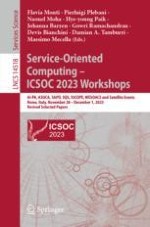2024 | OriginalPaper | Buchkapitel
Improving Deep Learning Transparency: Leveraging the Power of LIME Heatmap
verfasst von : Helia Farhood, Mohammad Najafi, Morteza Saberi
Erschienen in: Service-Oriented Computing – ICSOC 2023 Workshops
Verlag: Springer Nature Singapore
Aktivieren Sie unsere intelligente Suche, um passende Fachinhalte oder Patente zu finden.
Wählen Sie Textabschnitte aus um mit Künstlicher Intelligenz passenden Patente zu finden. powered by
Markieren Sie Textabschnitte, um KI-gestützt weitere passende Inhalte zu finden. powered by
